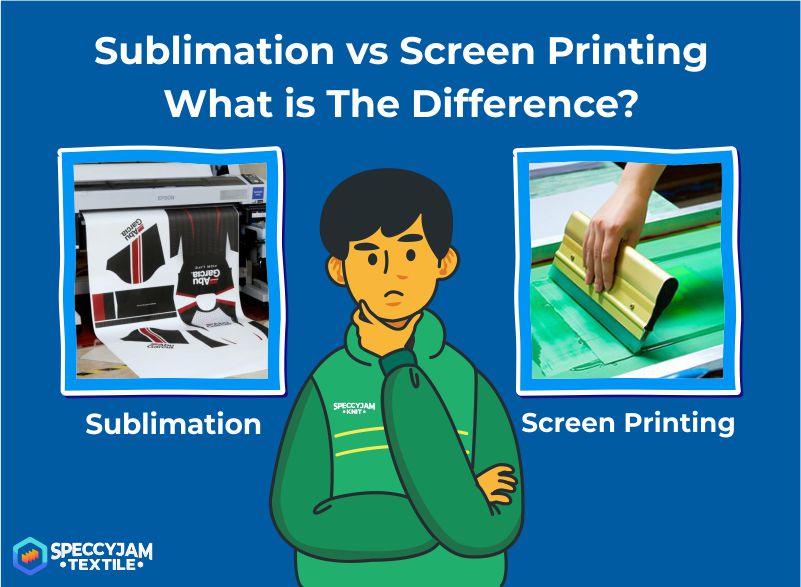You will need to prepare a stencil on the mesh for each color you want to use. Next, you can spread the thick plastisol ink over the stencil. You need to apply each color layer individually using its individual screen if your design has multiple colors. Then, the final process is to cure and set the ink by using a heat press machine.
Contents
Sublimation vs Screen Printing, What is The Difference?

After knowing the definition of each technique, now you need to know the difference. Both sublimation and screen printing have differences in color blending, durability, and cost-efficiency. If you are curious what the differences are, here is the review:
1. Color Blending
Both in sublimation and screen printing, color blending and getting the right color shades are quite difficult to achieve. In screen printing, you need to mix the color shades you want by hand. However, professionals generally use computerized paint mixing machines.
Whereas in sublimation, color blending is easier because the printer does this for you. The printer then mixes the primary CMYK colors and prints them onto transfer paper.
However, to produce accurate colors in this method, you must use software that has an ICC profile. Thus, the printer can match up what you see on the computer screen and create accurate blended colors.

2. Durability
If you are looking for which one has better durability between sublimation vs screen printing, the answer is sublimation. This is because the dye in sublimation binds deep beneath the surface of the fabric.
